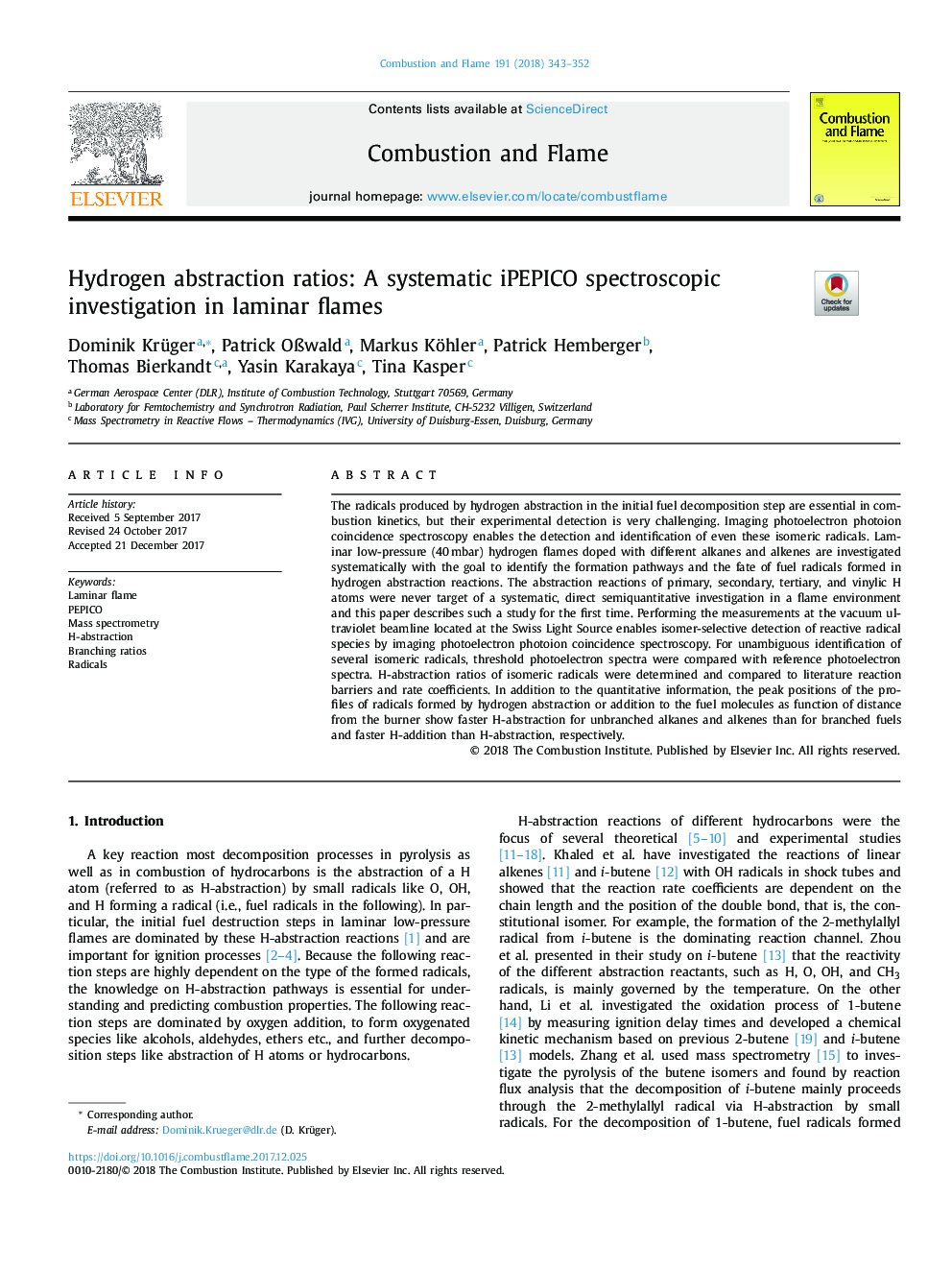| Article ID | Journal | Published Year | Pages | File Type |
|---|---|---|---|---|
| 6593762 | Combustion and Flame | 2018 | 10 Pages |
Abstract
The radicals produced by hydrogen abstraction in the initial fuel decomposition step are essential in combustion kinetics, but their experimental detection is very challenging. Imaging photoelectron photoion coincidence spectroscopy enables the detection and identification of even these isomeric radicals. Laminar low-pressure (40â¯mbar) hydrogen flames doped with different alkanes and alkenes are investigated systematically with the goal to identify the formation pathways and the fate of fuel radicals formed in hydrogen abstraction reactions. The abstraction reactions of primary, secondary, tertiary, and vinylic H atoms were never target of a systematic, direct semiquantitative investigation in a flame environment and this paper describes such a study for the first time. Performing the measurements at the vacuum ultraviolet beamline located at the Swiss Light Source enables isomer-selective detection of reactive radical species by imaging photoelectron photoion coincidence spectroscopy. For unambiguous identification of several isomeric radicals, threshold photoelectron spectra were compared with reference photoelectron spectra. H-abstraction ratios of isomeric radicals were determined and compared to literature reaction barriers and rate coefficients. In addition to the quantitative information, the peak positions of the profiles of radicals formed by hydrogen abstraction or addition to the fuel molecules as function of distance from the burner show faster H-abstraction for unbranched alkanes and alkenes than for branched fuels and faster H-addition than H-abstraction, respectively.
Related Topics
Physical Sciences and Engineering
Chemical Engineering
Chemical Engineering (General)
Authors
Dominik Krüger, Patrick OÃwald, Markus Köhler, Patrick Hemberger, Thomas Bierkandt, Yasin Karakaya, Tina Kasper,
